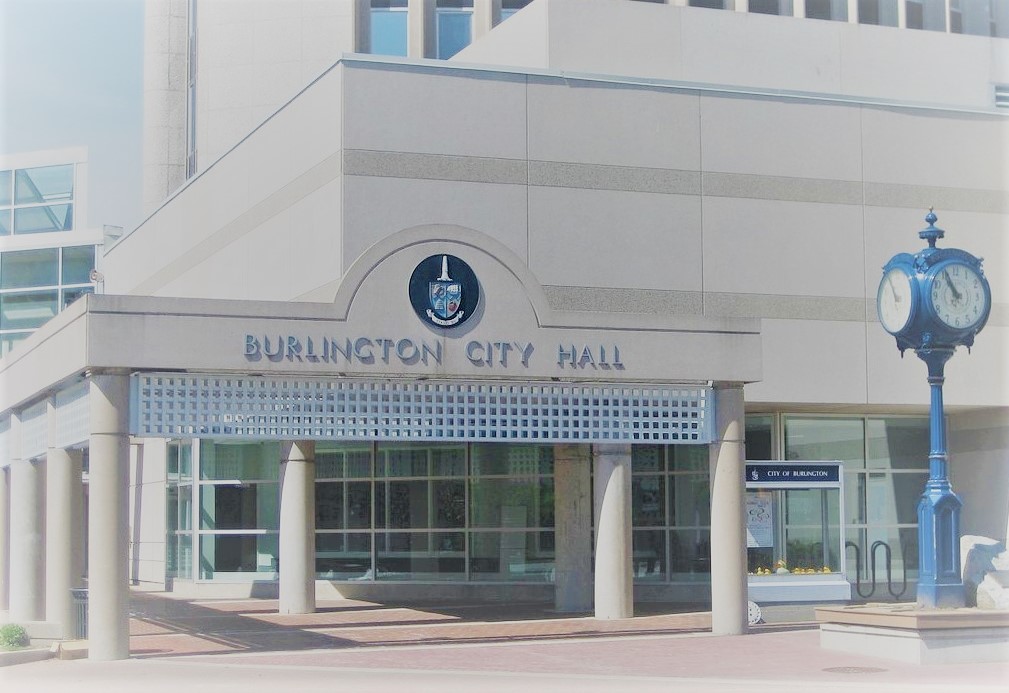He gave Aldershot its name. Now, it may be time to honour him.
He was William Applegarth, an English settler who came to this area in 1791.
Soldier, justice of the peace, miller, commissioner, school master, and merchant, the story of William Applegarth is woven deeply into Aldershot’s history.
Now, some local history buffs want to promote Applegarth’s contribution to Aldershot. Their efforts have been endorsed by the Cootes to Escarpment EcoPark system, which recommended that an Applegarth interpretive feature be located in Hidden Valley Park.
In its recently published Lands Management Plan, the EcoPark system said more should be done to celebrate Aldershot’s roots.
The report recommends that efforts be made to: “Develop an interpretive feature in Hidden Valley Park incorporating authentic millstone(s) to communicate the cultural history of Lower Grindstone Creek and the importance of early mills throughout the Heritage Lands. Local interest in this mill provides an opportunity for citizen engagement.”
That reference is to William Applegarth’s gristmill. Its original location in Hidden Valley has been described by Aldershot history fan Scott Forsyth: “As you drive north and go through the tunnel under Highway 403, it would have been on your right where the Grindstone Creek flows under the road.”
The Man
“Applegarth arrived from England and settled on a crown grant at Oaklands. His farm stretched from east of the present LaSalle Park Rd. to west of [the former] Aldershot Plaza and down to the bay front. The first grist mill was built in Hidden Valley in 1809 when salmon abounded in his stream,” wrote Claire Emery and Barbara Ford, the authors of Burlington’s 1967 history book From Pathway to Skyway.
Applegarth was no slouch. Besides being a miller, he was the first schoolmaster at Newark (now Niagara-on-the-Lake). He enlisted in the militia and fought as a captain in both Detroit and Queenston Heights during the war with the Americans. He served in a number of local government positions, including commissioner of the Burlington Beach Canal. He opened a store on John Street in Hamilton. He founded a school in Aldershot and he donated the land for the St. Matthew’s Church cemetery.

The Mill
The Applegarth gristmill (only the second in the district) played a big role in the fledgling Aldershot community and became an important enterprise. Farmers apparently brought their grist from as far away as St. David’s and records show that the mill was visited by such locals as the daughters of Chief Joseph Brant.
But luck was not on Applegarth’s side. His mill burned down in 1812. It was quickly rebuilt and then burned down again in 1813. According to memories recorded by Applegarth’s niece, “All the machinery was destroyed, but the stone walls owing to their strength remained.” He then built his third and lasting mill.
“Applegarth announced to his friends that neither devil or man would be able to destroy the stout stone structure,” according to a St. Matthew’s Church record.
But his problems continued. Upstream, another settler built a mill and dam in 1827 that obstructed the flow of water to Applegarth’s mill. He sued the intruder, initially lost the case, but finally won, resulting in an uninterrupted flow of water.
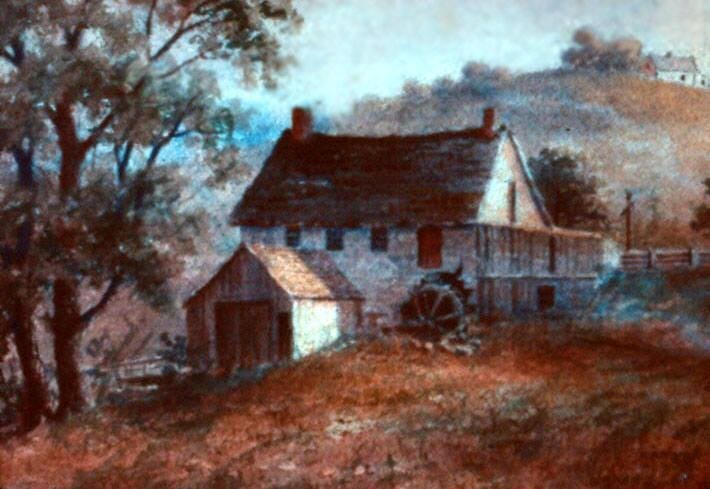
After his death in 1839, ownership of the Applegarth Mill changed hands and it eventually stopped turning in the 1880s, as the last mill operator is recorded on the 1881 census.
An 1887 article in the Hamilton Spectator described the remains of the mill. “The mill is one of the most picturesque pieces of ruin to be found anywhere about the country. Its stone walls are actually falling to pieces, and yet inside there is a full and complete milling plant, looking as if it was waiting for the owner to come along, open the big sluice gate, let in the rushing stream to turn the big wheel and start it all going.”
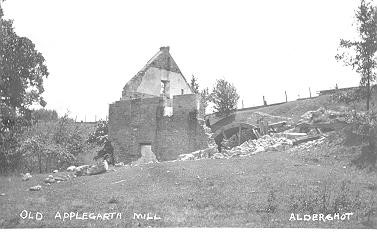
Over the years, the property was owned by such notable local families as the Townsends, the Irelands, and the Filmans. Then in the early 1960s, the Ontario government constructed Highway 403 over the former gristmill site using two large concrete culverts. The original mill site was virtually obliterated.
The Discovery
In 2006, Scott Forsyth and fellow history buff Keith Thornborrow were exploring a farm on Panin Road that was once owned by William Applegarth. They found two old millstones. One was laying on the ground and one was upright.
“The stones [had been] collected and transported to the Hilltop Farm by Thomas Brooke Townsend and they remained forgotten until they were discovered on the lawn there by Scott and myself,” according to Thornborrow.
“We were coming out of the house and right there on the lawn was the millstone. We had walked right past it going into the house. As soon as we saw the one on the lawn, we looked over a bit further and there was the second stone made into a flag pole display. It’s still there.”
After getting permission to remove one of the stones, they called upon Bill DeLuca, owner of Aldershot Landscaping. “He had a couple of guys come down with a forklift, dug [the bigger stone] out of the ground and took it back to his yard, and that’s where it’s sitting,” said Forsyth during a recent interview.
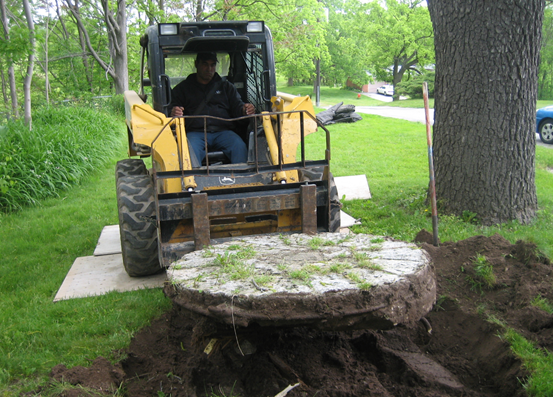
The Idea
Thornborrow thought that a proper display of the stone in Hidden Valley Park would make a great project for Canada’s 150th anniversary. He called upon his friend and long-time Aldershot resident Leslie Bullock.
Bullock enlisted the help of Mark Preston and together they went to the city.
According to the minutes of the September 13, 2017, Heritage Advisory Committee meeting, they “indicated that while the stone did not need to be moved this year, it should be moved in the near future. [They] indicated that they would be fundraising, but asked the committee for additional help in ensuring the relocation takes place.”
The committee voted to support the idea of a plaque and asked city staff to investigate a possible location for the stone, which they did.
Unfortunately, life got in the way and not much happened after that. Bullock hasn’t forgotten about the project, however, and is willing to carry on.
“I’d love to see the story told…Mark and I are still willing to fundraise. We estimate $5000 would place the stone. I don’t think it’s a huge project. …It’s so important to show people the history and how the area came to be. Gristmills were the start of everything.”
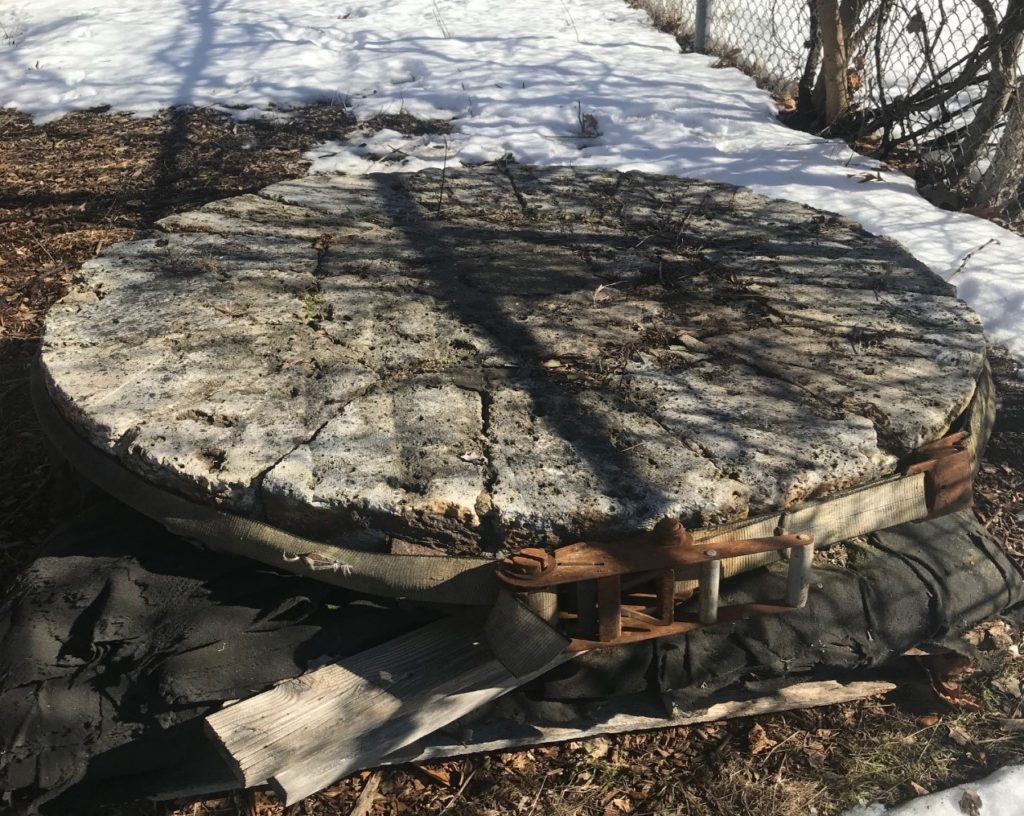
Preston remains a fan. “These things are all handmade. To take these odd shaped stones and grind them to fit together is just amazing. That kind of artisan work, you don’t see much anymore. It’s nice to show that off.”
Aldershot’s city Councillor Kelvin Galbraith is the city’s representative on the Board of Tourism Burlington. He also supports the effort to display the stone.
“I am fully supportive of the citizen-led efforts to display a grindstone in Hidden Valley park to celebrate the long Aldershot history of William Applegarth. Displaying Aldershot’s heritage was recommended by the recent Cootes to Escarpment EcoPark report, so the inclusion of an item currently in storage should be an easy choice.”
Anyone wishing to help with the project should contact Leslie Bullock.
Office phone: 905-333-3500; cell phone: 905-317-3279.



